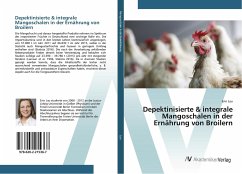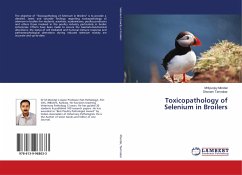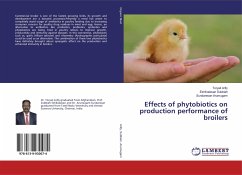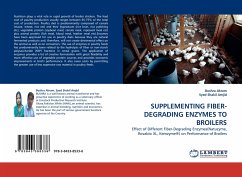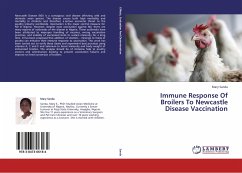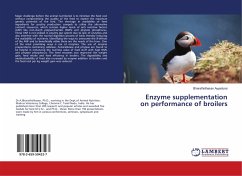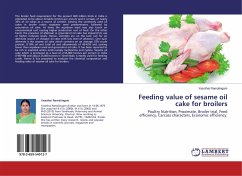
Feeding value of sesame oil cake for broilers
Poultry Nutrition, Proximate, Broiler trial, Feed efficiency, Carcass characters, Economic efficiency.
Versandkostenfrei!
Versandfertig in 6-10 Tagen
27,99 €
inkl. MwSt.

PAYBACK Punkte
14 °P sammeln!
The broiler feed requirement for the present 600 million birds in India is estimated to be about 24 lakhs tonnes per annum and it consists of nearly 35% of oil cakes as a source of protein. Among the commonly used oil cakes in broiler ration soyabean meal predominates, followed by groundnut oil cake. At times the soyabean meal may also touch an uneconomical cost causing higher production cost of feed. On the other hand, the presence of aflatoxin in groundnut oil cake has impaired its use at higher inclusion levels. Hence, scientists are on the look out for an alternate source of cheaper oil ca...
The broiler feed requirement for the present 600 million birds in India is estimated to be about 24 lakhs tonnes per annum and it consists of nearly 35% of oil cakes as a source of protein. Among the commonly used oil cakes in broiler ration soyabean meal predominates, followed by groundnut oil cake. At times the soyabean meal may also touch an uneconomical cost causing higher production cost of feed. On the other hand, the presence of aflatoxin in groundnut oil cake has impaired its use at higher inclusion levels. Hence, scientists are on the look out for an alternate source of cheaper oil cake with low level of aflatoxin. One such alternate is the sesame oil cake which contains on an average 32% crude protein, 8-10% oil and total oil and albuminoids of 40-42% and costing lower than soyabean meal and groundnut oil cake. It has been reported to be rich in essential amino acids namely methionine and cystine. Sesame oil cake which is produced to a level of 2,55,000 tonnes per annumin India (1997-98) and about 25,000 tonnes in Tamil Nadu is mostly used for feeding cattle. Hence it has proposed to evaluate the chemical composition and feeding value of sesame oil cake for broilers.





